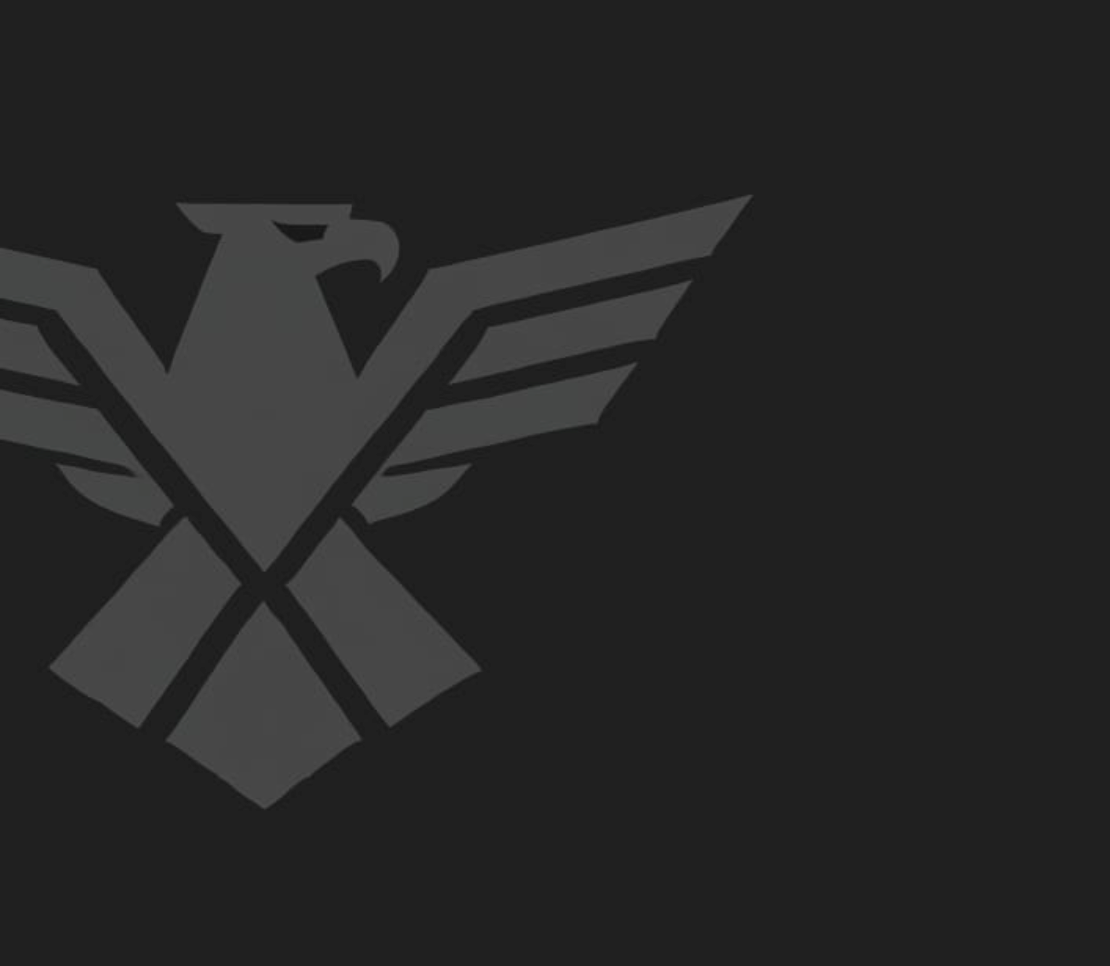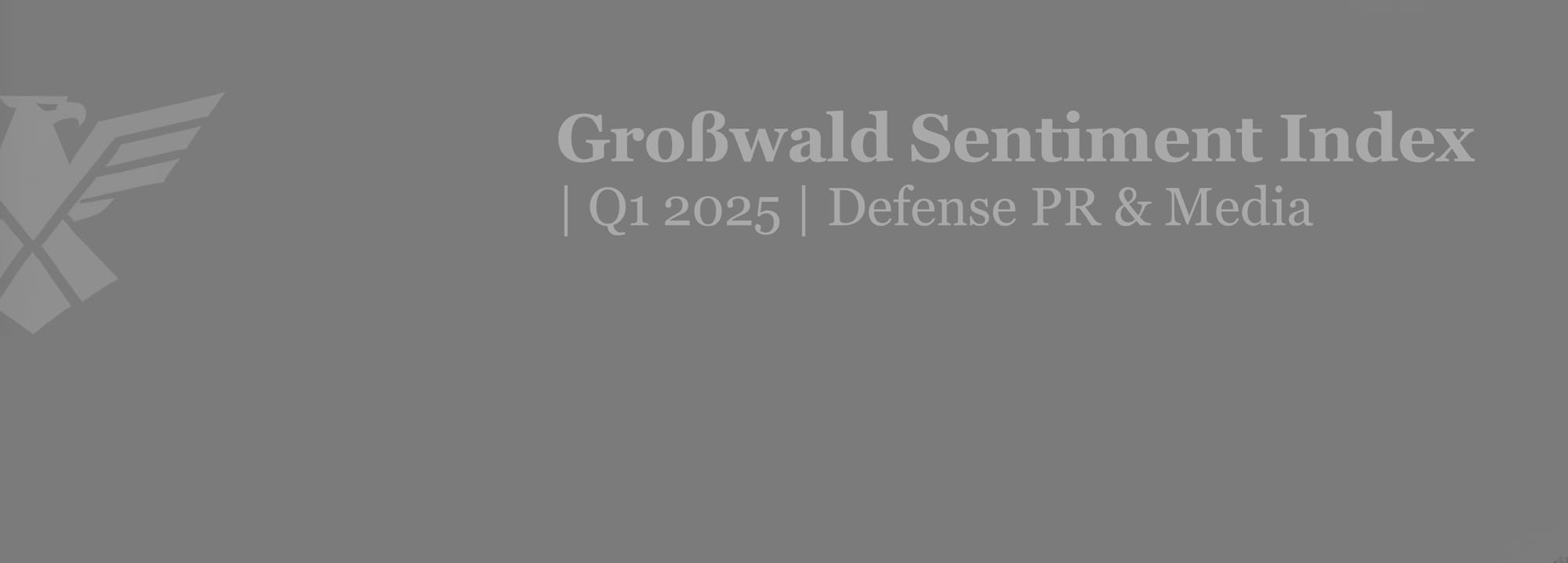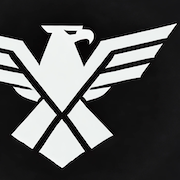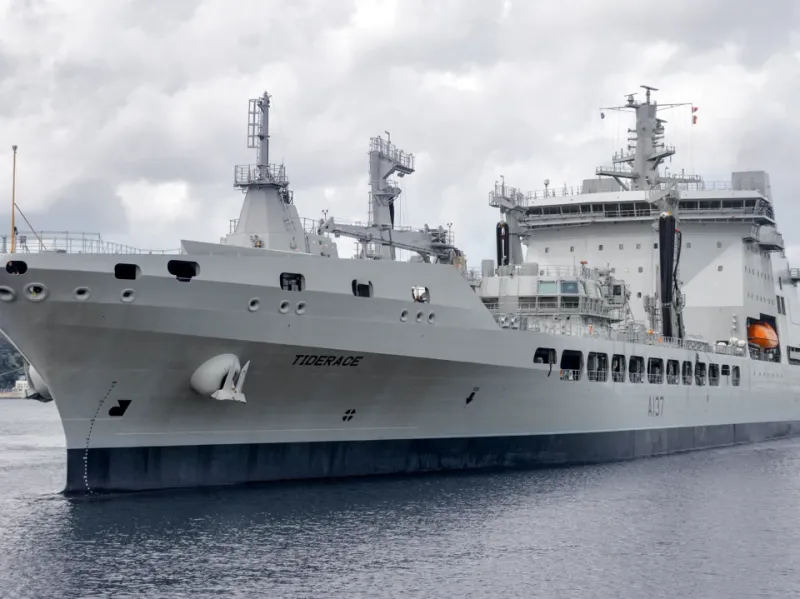Rheinmetall – Strategic Messaging, Narrative & Sentiment | Q1 2025 Defense PR | Großwald Sentiment Index
CEE defense PR surged in Q1. MBDA,Thales, Diehl, KNDS, and Hensoldt communicated often. Entry 1 of the Sentiment Index analyzes the Q1 2025 PR output of Rheinmetall - highlighting message cohesion, assertiveness, low sentiment volatility, and high alignment with EU defense initiatives.
About the Index
The Großwald Sentiment Index maps how defense actors construct narrative control, manage sentiment bandwidth, and maintain signal discipline in contested media environments.
The series draws on open-source materials (press releases, policy briefings, media coverage), institutional signal activity, and internal media monitoring frameworks.
It is published for open institutional use; attribution is requested when cited. Inquiries regarding extended diagnostics or tailored briefings can be directed to: editorial@desk.grosswald.org

Defense communications across Central and Eastern Europe intensified in Q1 2025. Major firms—including BAE Systems, Leonardo, Rheinmetall, Thales, Diehl, KNDS, and Hensoldt—issued announcements spanning procurement, R&D, and strategic partnerships.
This report focuses on Rheinmetall’s narrative posture, signal architecture, and institutional reception across policy, trade, and public media channels.
Editorial Note (April 24, 2025):
- Select secondary sources have been replaced with primary materials and institutional reporting related to EU defense procurement and supply resilience.
Rheinmetall | Strategic Messaging, Narrative & Sentiment
TL;DR: Rheinmetall’s Q1 messaging was assertive, cohesive, and well-aligned with Europe’s defense rearmament narrative. High signal density, consistent tone, and strong media uptake drove low sentiment volatility. Financial and operational highlights reinforced its positioning as a core industrial actor in European security.
Rheinmetall | Communications Highlights
Rheinmetall AG, Germany’s defense heavyweight, had a banner Q1 2025 and communicated accordingly, issuing numerous press releases on new contracts, strategic expansions, and record financial results.
On March 12, Rheinmetall unveiled FY 2024 results, calling it a “boom” year: €9.75 billion in sales (+36%), defense up 50%, and a record €55 billion backlog. rheinmetall.com.
This disclosure – accompanied by the CEO’s remark that Europe’s “era of rearmament” has fueled unprecedented growth rheinmetall.com – was a centerpiece of Rheinmetall’s Q1 communications and widely disseminated. This framing reflects not just industrial optimism, but a broader narrative shift—positioning rearmament as an economic and strategic imperative, rather than merely a response to geopolitical pressure.
In parallel, Rheinmetall announced several major defense contracts. Notably, on January 6, Rheinmetall confirmed an order (funded by Germany) to supply 180,000 rounds of 35mm ammunition for Ukraine’s Gepard anti-aircraft tanks (worth a high-double-digit million euro sum) rheinmetall.com. Building on a previous 300,000-round order, this positioned Rheinmetall as Ukraine’s “most important defense partner” with fast-tracked production at Unterlüß. rheinmetall.com. Here, urgency becomes part of the brand. Speed of delivery is now as much a messaging asset as a logistical one.
In January, Rheinmetall also publicized a contract (signed end of Dec 2024) with Germany and partners to develop the IRIS-T SLM Block II missile in a consortium led by Diehl – a program Rheinmetall supports with warhead and propulsion components. Domestically, on Feb 19, Rheinmetall announced a €260 million Bundeswehr logistics contract to become the Army’s full-service partner for troop redeployment, ensuring support for national and NATO deployments over 10 years rheinmetall.com.
Internationally, Rheinmetall celebrated a major Australian success: on Feb 20, it marked the completion of Australia’s LAND 121 program, having delivered over 3,500 HX logistics trucks to the ADF rheinmetall.com. A press event in Melbourne (with local DoD officials) underscored this milestone and was echoed in Rheinmetall’s social media as a testament to its global reach.
Q1 also spotlighted Rheinmetall’s demo and exhibition push: Kodiak armored engineer vehicle in Poland (targeting Polish procurement programs) rheinmetall.com, a GMARS summit with Lockheed Martin, showcasing long-range artillery to 14 allied delegations rheinmetall.com, the Enforce Tac 2025 debut of its new “Ermine” light vehicle family and Soldier Systems kits rheinmetall.com. That same month, it launched three Land Autonomy Centres of Excellence (Germany, Nordics, UK) to accelerate deployment of its PATH autonomous kit rheinmetall.com
Strategically, Rheinmetall announced corporate moves to strengthen its portfolio: on Feb 20 it rebranded its U.S. subsidiary as American Rheinmetall to unify its brand for all American defense customers rheinmetall.com. Brand harmonization in the U.S. market aligns with a broader strategic positioning effort aimed at transatlantic relevance. Earlier, on Jan 12, it disclosed a contract to supply six advanced naval training simulators to the German Navy (mid-double-digit million euro project) rheinmetall.com.
Throughout Q1, Rheinmetall actively communicated its support for Ukraine’s defense: beyond ammunition, it noted deliveries of additional 155mm artillery propellant charges (tens of thousands of modules delivered in January under a €9 million contract) rheinmetall.com, as well as ongoing efforts to set up joint ventures in Ukraine for vehicle production (referencing a 2024 MoU to potentially produce Lynx IFVs locally (rheinmetall.com).
Rheinmetall’s multi-channel approach – from formal PRs on its website to briefings at the Munich Security Conference 2025 (where CEO Armin Papperger spoke about Europe’s munitions needs) – ensured its Q1 achievements (financial and operational) were highly visible and framed within the context of Europe’s urgent defense needs.
Rheinmetall | Tone, Positioning and Consistency
Rheinmetall’s Q1 communications exuded a confident, assertive tone that positioned the company as Europe’s indispensable defense supplier and a direct beneficiary of the “Zeitenwende.”
The language in its press releases was often bold and results-oriented, frequently using superlatives: e.g., “new all-time records” for results rheinmetall.com, “major high-volume orders” filling the backlogrheinmetall.com, and Rheinmetall being the “world’s leading” provider in areas like air defense rheinmetall.com.
This tone of industrial might and technological leadership was consistent across communications. When announcing financials, Rheinmetall touted massive percentage increases and record margins, conveying an image of an unstoppable growth trajectory. CEO Papperger’s statements reinforced a nationalistic and proactive tone – he spoke of meeting Germany’s “dramatically changed” security needs and transforming Rheinmetall from a European supplier into a “global champion” rheinmetall.com. Such wording cast Rheinmetall as a 'strategic pillar for Europe’s defense'. Rheinmetall’s messaging architecture draws on the narrative logic of institutional transformation—emphasizing continuity, resilience, and a redefinition of industrial purpose within the Zeitenwende. This narrative progression—disruption, adaptation, redefinition—echoes the structure of the classical story arc, often employed in institutional transformation strategies, where an actor confronts adversity, adapts, and emerges redefined.
The tone in addressing contracts and products was similarly assertive. Communications about munitions production for Ukraine emphasized Rheinmetall’s rapid action and unrivaled capacity, with mentions of fast-track production lines and ever-increasing output thedefensepost.comrheinmetall.com. Consistently, Rheinmetall positioned itself as solution-oriented and urgent: press releases about new JV formations (e.g., in Hungary) stressed long-term support and close cooperation with customers knds.com, implying Rheinmetall as the go-to partner when readiness is paramount.
Across press announcements, investor presentations, and event messaging, this can-do, front-line persona remained steady. Even at trade shows like Enforce Tac, Rheinmetall’s messaging highlighted buzzwords like digitisation, effectiveness, protection, mobility rheinmetall.com, maintaining its theme of comprehensive competence. This front-line persona was institutionalized with a €3.1 billion Bundeswehr contract to digitize infantry forces—the largest soldier-system deal in company history rheinmetall.com. In parallel, it secured a multi-billion-euro framework for the Bundeswehr’s tactical communications backbone—TaWAN LBO Tactical.
The company’s communications also carried a subtle competitive edge – references to “global demand outpacing supply” and Rheinmetall’s expansions (like gunpowder output +50% by 2028) bloomberg.com signaled that Rheinmetall sees itself leading the pack in solving Europe’s defense supply bottlenecks. This kind of forward-leaning projection is part tactical forecast, part psychological signaling—reminding stakeholders that Rheinmetall intends to own the bottleneck narrative, not be buried under it. By consistently framing itself as robust, responsive, and at the forefront of rearmament, Rheinmetall’s communications across Q1 were tightly aligned and mutually reinforcing. Whether discussing finances, contracts, or new ventures, the underlying message stayed constant: Rheinmetall is strong and getting stronger precisely because it is delivering what today’s security situation demands.
Rheinmetall | Media and Public Reception
The media and public responded to Rheinmetall’s Q1 moves with intense interest, generally echoing the company’s triumphant narrative, though not without some critical context.
Financial media widely covered Rheinmetall’s stellar 2024 results. For example, Euronews and Reuters reported the 61% profit jump and record €55 billion backlog, attributing it to Europe’s military splurge and noting Rheinmetall’s forecast of 25–30% sales growth in 2025 euronews.com.
The share market’s reaction reinforced the narrative: Rheinmetall’s stock spiked and then rallied further in February on anticipation of defense deals, a trend noted in Reuters pieces which listed Rheinmetall among the top gainers in a broader European arms stock surge reuters.com. This positive coverage underlined Rheinmetall’s role as a “proxy stock” for Europe’s rearmament, aligning with the company’s portrayal of itself as riding a historic defense upswing. Trade publications also amplified Rheinmetall’s announcements.
JanES and Defense Post detailed the Ukraine ammunition contracts and IRIS-T missile development, emphasizing Rheinmetall’s contributions (e.g., production scaling, multi-nation cooperation) in neutral terms that matched Rheinmetall’s own framing rheinmetall.com breakingdefense.com.
Moreover, high-profile media interviews with CEO Papperger (on outlets like Bloomberg TV, the Financial Times and Germany’s ARD) saw him reiterate the need for industrial ramp-up; Papperger described the current moment as “an era of rearmament in Europe,” stressing that even significant production increases may not be enough to meet surging demand. These interviews were often summarized in press coverage as Rheinmetall “warning that even a 50% output boost may fall short” of demand bloomberg.com, which effectively reinforced Rheinmetall’s call for continued investment (and implicitly justified its expansions).
Public sentiment in Germany and Europe around Rheinmetall was a mix of acknowledgement and scrutiny.
On one hand, there was broad public approval (and political praise) for Rheinmetall’s deliveries of weapons and ammo to Ukraine, which media outlets covered as crucial support to Kyiv’s defense. For instance, the signing of a tripling of IRIS-T system production for Ukraine was reported with quotes from Ukraine’s defense minister thanking Rheinmetall for its cooperation thedefensepost.com, aligning the media narrative with Rheinmetall’s image as Ukraine’s key partner.
On the other hand, credible reporting has flagged the risks tied to Rheinmetall’s wartime growth. The Economist noted that Europe’s ammunition output is increasingly limited by shortages of key explosives like nitrocellulose—materials beyond Rheinmetall’s direct control. As the Financial Times reported, over 70% of the cotton linters used to produce nitrocellulose come from China, exposing Rheinmetall to geopolitical risk. In response, the company is stockpiling supplies, expanding domestic production, and acquiring suppliers like Hagedorn-NC.
This perspective did not contradict Rheinmetall’s messaging but added nuance, implying that even the industry leader faces challenges meeting demand – a point Papperger himself often made. Meanwhile, German social media and civil society showed some unease about war profiteering; however, by Q1 2025 this was tempered by the widely accepted need to re-equip the Bundeswehr. Notably, news of Rheinmetall securing jobs (e.g., saving the Görlitz factory and 580 workers knds.com ) garnered positive local press, framing the company as a responsible industrial player.
In sum, media narratives were largely favorable, portraying Rheinmetall as a top beneficiary of Europe’s defense renaissance and broadly validating its aggressive growth strategy. When Bloomberg wrote that Rheinmetall shares “have more than doubled” since the Ukraine war started bloomberg.com, it encapsulated a storyline Rheinmetall itself promulgated: that of a once-sleepy arms maker transformed into a European powerhouse by rising to meet a historic challenge. This congruence between the media narrative and Rheinmetall’s intended positioning indicates that the company’s Q1 communications landed effectively, with only mild tempering by analysts regarding long-term sustainability of such rapid growth.

Großwald is an independent defense intelligence and editorial platform as part of a research and editorial project delivering curated news, strategic analysis, and in-depth coverage of military systems and technologies. Our focus spans Central and Eastern Europe (CEE), Germany, NATO, and the evolving architecture of European defense integration.
We focus on the intersection of military modernization, advanced defense technologies, and geostrategic transformation—serving defense professionals, policy analysts, and industry decision-makers. Großwald's research and editorial projects are not affiliated with any government, defense contractor, or sponsor.






